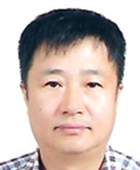
틸팅 패드 베어링의 트라이볼로지 특성 평가를 위한 유막두께 측정 방법 연구
Abstract
In studies on lubrication analyses, researchers have investigated mixed lubrication as well as hydrodynamic lubrication. One of these published studies concerns lubrication analysis by considering not only the surface roughness but also the slope parameter of the friction surface; in the study, the relative slope of the pad bearing surface was confirmed to influence the friction characteristics. However, verification of whether the lubrication analysis values are comparable to those of the friction tests is yet to be conducted. In this study, to experimentally verify the results of this previous lubrication analysis, we developed an experimental device to derive the slope parameter and analyzed the results. The film thickness was calculated by analyzing the slope parameter obtained from the friction tests and was then used as the input value for lubrication analysis.
Keywords:
Lubrication analysis, Friction test, Film thickness, Slope parameter, Mixed lubricationAcknowledgments
“이 과제는 부산대학교 기본연구지원사업(2년)에 의하여 연구되었음”.
References
- Son, S. I., Kim, K. W., Jeon, W. J., 2016, Improvement in Lubrication Performance of a Piston Ring and a Cylinder Liner via Variation of Shape and Arrangement of Micro- grooves, Proc. of the Korean Soc. of Tribologists and Lubrication Engineers Autumn Conf., 15-16.
-
Richardson, D. E., 2000, Review of Power Cylinder Friction for Diesel Engines, J. engineering for Gas Turbines and Power, 122:4 506-519.
[https://doi.org/10.1115/1.1290592]

-
Fowell, M., Olver, A. V., Gosman, A. D., Spikes, H. A., Pegg, I., 2007, Entrainment and Inlet Suction: Two Mechanisms of Hydrodynamic Lubrication in Textured Bearings, ASME J. Tribology, 129:2 336-347.
[https://doi.org/10.1115/1.2540089]

-
Qiu, Y., Khonsari, M. M., 2011, Performance Analysis of Full-Film Textured Surfaces With Consideration of Roughness Effects, ASME J. Tribology, 133:2 021704.
[https://doi.org/10.1115/1.4003303]

-
Patir, N., Cheng, H. S., 1978, An Average Flow Model for Determining Effects of Three-Dimensional Roughness on Partial Hydrodynamic Lubrication, J. of Lubrication Tech., 100:1 12-17.
[https://doi.org/10.1115/1.3453103]

-
Patir, N., Cheng, H. S., 1979, Application of Average Flow Model to Lubrication between Rough Sliding Surfaces, J. of Lubrication Tech., 101:2 220-229.
[https://doi.org/10.1115/1.3453329]

-
Lunde, L., Tonder, K., 1997, Pressure and Shear Flow in a Rough Hydrodynamic Bearing, Flow Factor Calculation, ASME J. Tribology, 119:3 549-555.
[https://doi.org/10.1115/1.2833536]

-
Harp, S. R., Salant, R. F., 2001, An Average Flow Model of Rough Surface Lubrication with Inter-Asperity Cavitation, ASME J. Tribology, 123:1 134-143.
[https://doi.org/10.1115/1.1332397]

-
Zhou, R., Cao, J., Wang, Q. J., Meng, F., Zimowski, K., Xia, Z. C., 2011, Effect of EDT Surface Texturing on Tribological Behavior of Aluminum Sheet, J. Materials Processing Tech., 211:10 1643-1649.
[https://doi.org/10.1016/j.jmatprotec.2011.05.004]

-
Akbarzadeh, S., Khonsari, M. M., 2010, Effect of Surface Pattern on Stribeck Curve, Tribology Letters, 37:2 477-486.
[https://doi.org/10.1007/s11249-009-9543-2]

-
Lu, X., Khonsari, M. M., Gelinck, E. R., 2006, The Stribeck Curve: Experimental Results and Theoretical Prediction, ASME J. Tribology, 128:4 789-794.
[https://doi.org/10.1115/1.2345406]

-
Kim, M., Lee, S. M., Lee, D. W., Park, S., Kim, S., 2017, Tribological Effects of a Rough Surface Bearing Using an Average Flow Analysis with a Contact Model of Asperities, Int. J. Precision Engineering and Manufacturing, 18:1 99-107.
[https://doi.org/10.1007/s12541-017-0012-9]

-
Zum Gahr, K. H., Mathieu, M., Brylka, B., 2007, Friction Control by Surface Engineering of Ceramic Sliding Pairs in Water, Wear, 263:7-12 920-929.
[https://doi.org/10.1016/j.wear.2006.11.024]


Senior Researcher in the Precision Mechanical Process and Control R&D Group, Dongnam Division, Korea Institute of Industrial Technology.His/Her research interest is Machining process.
E-mail: mrkim@kitech.re.kr

Professor in the Department of Nano Energy Engineering, Pusan National University.His/Her research interest is Tribology.
E-mail: dwoolee@pusan.ac.kr

Senior Researcher in the Industrial Liaison innovation center, Pusan National University.His research interest is Development of ultrasonic system.
E-mail: lastgaia@pusan.ac.kr

Ph.D. student in the Department of Nano Fusion Technology, Pusan National University.His/Her research interest is Application of artificial intelligence.
E-mail: nurfadilah249@gmail.com

Assistant professor in the Subdivision of Mechanical engineering, Kyungnam college of Information&Technology.His research interest is Machining process.
E-mail: jungjh@eagle.kit.ac.kr